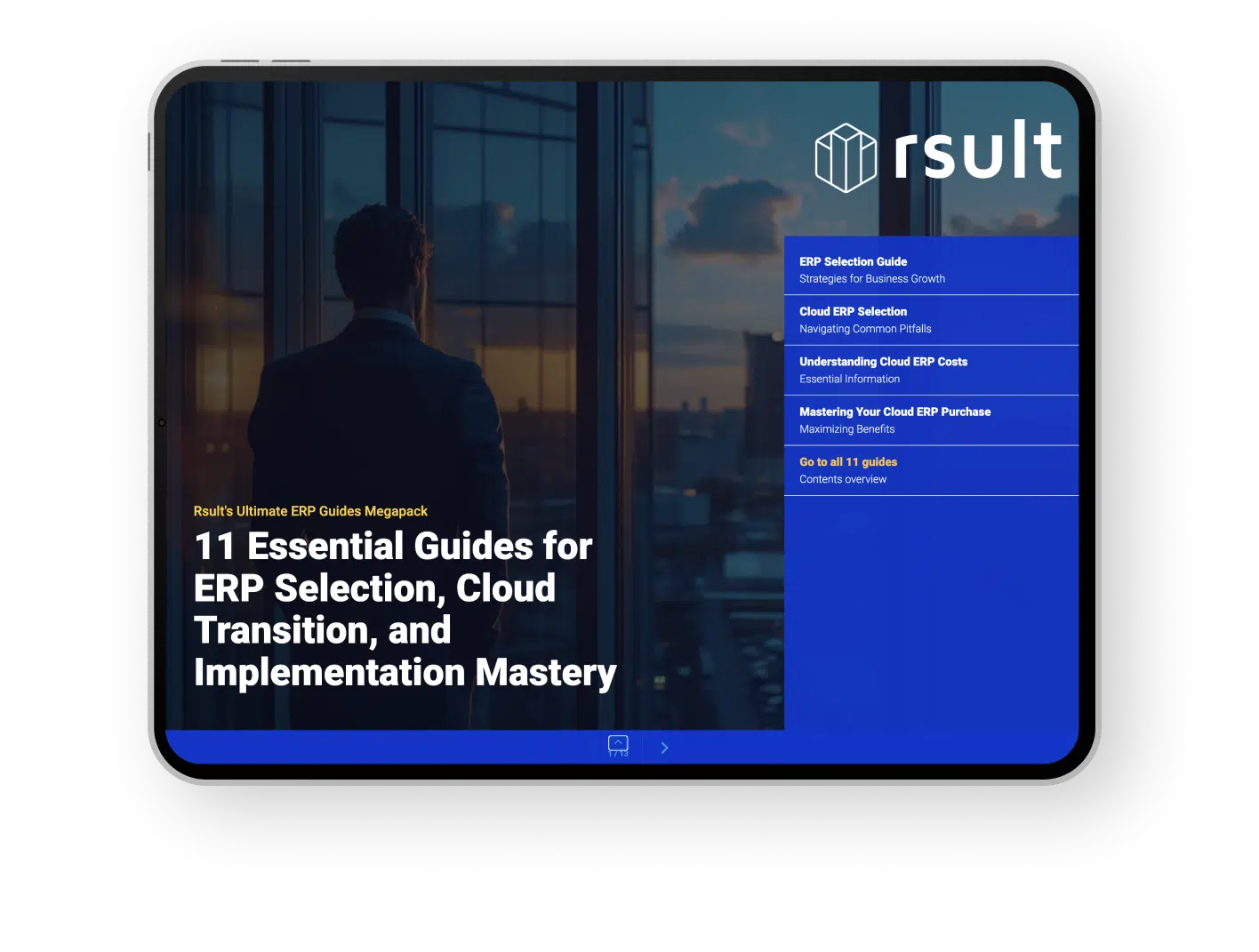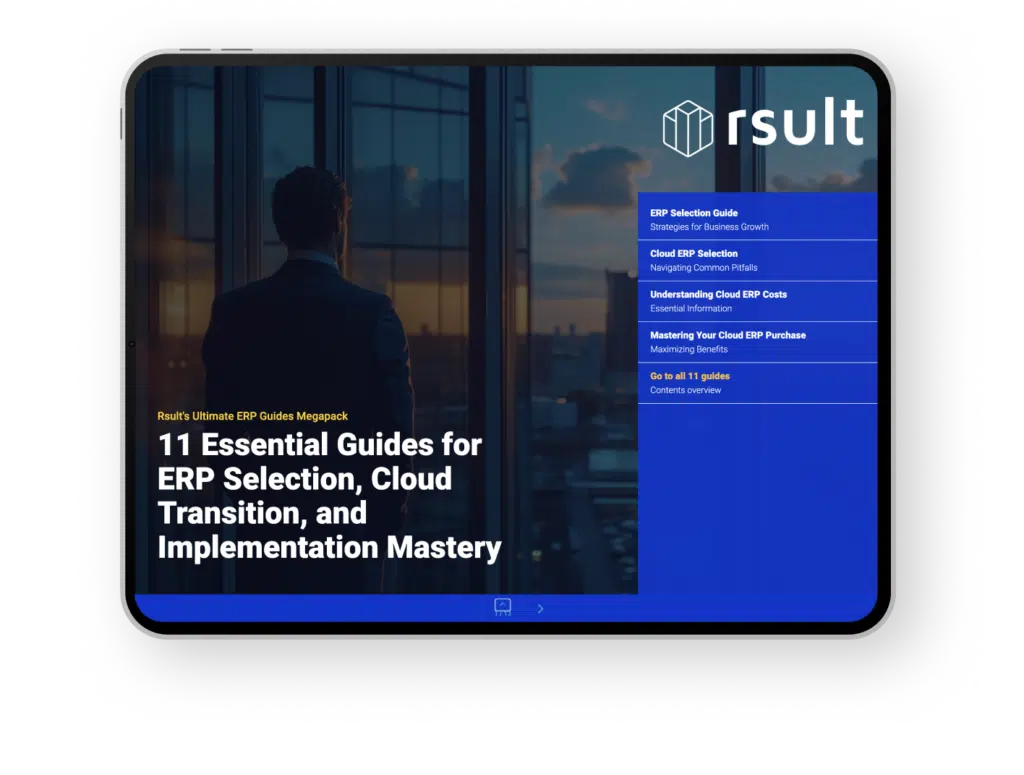Implementing an Enterprise Resource Planning (ERP) system is a significant move for any enterprise aiming to stay ahead in today’s fast-paced market. Adhering to ERP implementation best practices is vital for a smooth transition and is the foundation of a successful ERP implementation. Central to this endeavor is a systematic approach that caters to the nuanced demands of modern businesses and aligns with their strategic objectives. A well-executed ERP systems implementation not only modernizes operations but also drives efficiency and value across all departments within an organization.
Key Takeaways
- Understand the importance of clear visions and meticulous planning in ERP systems implementation.
- Recognize the need for a comprehensive analysis of business requirements to customize the ERP system aptly.
- Appreciate the significance of engaging stakeholders across all departments during the implementation phase.
- Become aware of the balance required between system customization and standardization.
- Emphasize the necessity of rigorous user training and post-adoption support for a seamless transition.
The Critical Role of a Defined ERP Implementation Process
Embarking on an enterprise resource planning implementation, businesses must acknowledge the vital significance of establishing a well-articulated ERP implementation process. With the myriad of intricate components and required precision, executing an ERP system is not just a task—it’s a journey that demands a comprehensive roadmap consisting of critical ERP implementation steps.
The intricacy of the ERP implementation process unfolds right from the preparatory stages with an initial discovery phase. Here, a cross-functional team takes the first step towards crafting a robust system, woven into the organizational fabric to ensure seamless processes and enhanced efficiencies. Key activities performed during this stage set a precedent for the journey ahead.
Following the planning comes the detailed undertaking of designing workflows and configuring the ERP software to align with the unique needs of the enterprise. It is a meticulous effort that demands precision and foresight, involving thorough testing and validation of software performance across multiple scenarios to avoid disruptions during the operational phase.
Preparation is pivotal, and alongside it runs the parallel track of user training to ensure a well-informed workforce ready to navigate the new system with confidence. The culmination of this ERP implementation process lies in the strategic deployment of the system, accompanied by unwavering support and streamlined documentation—ensuring that every user undertakes their role in the transformed digital realm with adeptness and agility.
To further illustrate the significance of a methodical approach, consider the following table, which outlines the primary phases and respective considerations of a typical ERP implementation process:
| Phase | Main Activities | Considerations |
|---|---|---|
| Initial Discovery | Team selection, goal-setting, ERP software shortlisting | Clear objectives, stakeholder alignment, market research |
| Planning and Design | Workflow mapping, software configuration, documentation | Customization needs, integration points, user roles |
| Testing | Performance checks, security validations, user acceptance tests | Test planning, scenario creation, feedback mechanisms |
| Training and Support | Creation of training materials, user training sessions | Educational approach, documentation accessibility, ongoing support |
| Deployment | Go-live strategy execution, system monitoring | Risk management, backup plans, communication channels |
| Post-Deployment | System audits, performance analysis, upgrades | Continuous improvement, change management, scalability |
As the ERP system takes its form, each component of the aforementioned phases coalesces to bring forth a digital ecosystem that can drive transformative change across the enterprise. It is a sustainable evolution backed by persistent support and system upgrades, ensuring that the business continues to thrive amidst a backdrop of ever-changing market conditions and technological advancements.
The Dynamics of Stakeholder Engagement in ERP Deployment
Successful ERP software implementation hinges on the active participation of diverse stakeholders across the enterprise. Proper stakeholder engagement lays the groundwork for a smoother transition and cumulative buy-in, which can significantly influence the project’s success. By engaging a seasoned ERP implementation consultant, businesses can expertly navigate the complexities of stakeholder dynamics throughout the ERP deployment stages.
Identification and Inclusion of Key Stakeholders
At the core of stakeholder engagement is the meticulous identification of crucial decision-makers and influencers whose roles will intersect with the ERP system. This group often spans the breadth of an organization, from the executive suite to operational staff, each offering unique perspectives and insights that can enrich the ERP deployment agenda.
Promoting Interdepartmental Collaboration
Encouraging collaboration between departments is an art refined by stakeholder engagement efforts. ERP software implementation benefits immensely from interdepartmental harmony, where each branch of the organization works toward a singular, unified goal. ERP implementation consultants often facilitate forums and discussions to foster this sense of teamwork, ensuring the system is shaped to support each department effectively.
Maintaining Clear Communication
Open lines of communication are vital for maintaining transparency, setting proper expectations, and aligning stakeholder goals throughout the ERP implementation journey. Regular updates, inclusive meetings, and responsive feedback mechanisms are critical tactics employed by businesses to nurture a communicative and responsive ERP deployment atmosphere.
| Stakeholder Group | Role in ERP Implementation | Benefits of Engagement |
|---|---|---|
| Executive Leadership | Vision Setting and Strategic Oversight | Ensures ERP aligns with business objectives |
| Project Managers | Day-to-Day Implementation Management | Drives project efficiency and adherence to timeline |
| IT Department | System Configuration and Support | Technical customization and problem-solving |
| End-Users/Staff | User Experience Feedback | Refines system for practical, on-the-ground use |
| ERP Implementation Consultant | Expert Advisory and Best Practices Guidance | Offers specialized knowledge to evade common pitfalls |
ERP Systems Implementation
Many enterprises recognize the substantial benefits of an ERP systems implementation, which unifies disparate areas of operation from accounting to sales, and inventory to distribution. The complexities of such a system make selecting a seasoned ERP implementation company a critical step. The deployment phase, in particular, demands meticulous planning to align with a company’s unique scale and requirements.
A well-planned ERP deployment presents two predominant transitional strategies: a full transition at launch or a phased approach. The choice between these strategies directly correlates with a host of factors, including company size, operational complexity, and the immediacy of required ROI.
| Deployment Strategy | Advantages | Challenges |
|---|---|---|
| Full Transition at Launch | Immediate system unification and potential for quicker ROI. | Higher initial risk and potential disruption to operations. |
| Phased Approach | Lower initial risk and ability to adapt to feedback during subsequent phases. | Possibly longer timeframe to full ROI and sustained change management. |
The execution of an ERP systems implementation is inseparably linked to the selection of a proficient implementation team. This team doesn’t only understand the current pulse of the company’s processes but is equally committed to leveraging the extensive capabilities of an ERP system. A skillful collaborative effort supported by an ERP implementation company can ensure a smoother transition, thereby enhancing business performance and competitive advantage.
Balancing Customization with Standardization in ERP Software
Embarking on an ERP implementation journey involves critical decision-making to strike a balance between customized solutions and standardized practices. This equilibrium is not only paramount for a successful ERP implementation but also ensures adherence to ERP implementation best practices. Businesses must weigh the benefits of tailoring their ERP systems to specific needs against the agility and efficiency of using out-of-the-box features.
Assessing Business Needs for Custom Features
A tailored ERP solution can offer competitive advantages by addressing unique business processes that off-the-shelf software might not cover. However, customization comes at a cost – not just financially but also in terms of future system flexibility. Decisions about customizations are often guided by a thorough analysis of business requirements and a projection of future needs. A well-implemented ERP system grows with the business, and excessive customization might limit this scalability.
Adherence to Industry Best Practices
ERP systems are grounded in industry best practices, offering a wealth of accumulated knowledge and established processes. By utilizing these best practices, organizations can improve efficiency and avoid common pitfalls associated with custom development. Although it’s tempting to think a business needs to customize every aspect of its operations, often the standard functionalities are sufficient and have been refined over time for optimized performance.
For instance, consider the following table illustrating common scenarios of customization versus standardization:
| Business Requirement | Customization Consideration | Standardization Advantage |
|---|---|---|
| Unique Billing Process | Custom module may be necessary to accommodate specific billing rules. | Using standardized billing processes simplifies training and reduces errors. |
| Industry-Specific Compliance | Mandatory compliance might require custom reports or data handling. | Standard compliance modules are updated regularly to reflect industry changes. |
| Proprietary Manufacturing Techniques | Customized workflows can reflect the unique production methods of a company. | Standard practices help in maintaining a lean operational methodology. |
| Company-Specific Data Analytics | Custom analytics can provide tailored insights that may offer competitive advantages. | Standardized analytics tools facilitate easier benchmarking with industry peers. |
In conclusion, companies embarking on an ERP implementation should carefully consider their approach to customization. The key is to focus on long-term strategic goals and to choose custom features that genuinely add value while not deviating from the best practices that ERP solutions offer. A successful ERP implementation is one that supports business functionality today but is also poised to adapt to the needs of tomorrow.
Ensuring Data Integrity During and After ERP Implementation
A core aspect of any ERP implementation process is the meticulous data management that upholds the integrity of data. As we delve into the strategies and policies essential to maintain data quality, we recognize the impact of a structured approach on the operation’s efficiency and reliability.
Strategies for Data Migration and Management
Data migration is a critical phase in the ERP implementation process that necessitates a strategic approach. This involves extracting data from legacy systems, cleansing data to ensure that only accurate and relevant information is transferred, and then systematically importing it into the new ERP system. Let’s consider a proactive approach to planning for data migration:
- Evaluation of existing data to pinpoint necessary updates and avoid redundancies.
- Implementation of a thorough data cleanup to enhance data quality pre-import.
- Meticulous mapping of data fields from the old to the new system to support seamless integration.
- Rigorous testing to verify the accuracy and integrity of the migrated data within the new ERP framework.
- Investing in ongoing data quality monitoring tools to ensure the continuous accuracy and integrity of the ERP database.
Establishing Robust Data Governance Policies
Post-migration, establishing robust data governance policies is instrumental in preserving data integrity. It is not just about compliance but also about having a clear policy that delineates who can access or modify data within the ERP system. The table below outlines key components and responsibilities in a stern data governance framework:
| Data Governance Component | Responsibilities | Tools/Processes |
|---|---|---|
| Data Quality Management | Ensure ongoing accuracy and reliability of data in the ERP system. | Data Profiling, Monitoring Software |
| Data Security | Protect against unauthorized access and breaches. | Access Controls, Encryption |
| Regulatory Compliance | Maintain adherence to relevant industry regulations and standards. | Compliance Audits, Reporting Mechanisms |
| Data Lifecycle Management | Manage the flow of data from creation to retirement. | Information Lifecycle Policies |
| Data Usage and Access | Control who can use and view data within the ERP system. | Role-Based Access, Authentication Protocols |
In every phase of the ERP implementation process, preserving the integrity of enterprise data is non-negotiable. It requires vigilance, precision, and collaboration across all levels of the organization. By firmly establishing data migration strategies and governance policies, businesses can ensure the resilience and reliability of their data architecture, laying the groundwork for successful operations and informed decision making.
User Training: Empowering Employees for a Seamless ERP Transition
In the landscape of modern enterprise resource planning (ERP) systems, the transition period is a critical juncture that can determine long-term success. Having robust user training and support mechanisms in place significantly enhances employee competencies and acceptance of new ERP solutions. A proficient ERP implementation consultant understands that the intricacies of user education directly impact a project’s successful adoption and operational continuity.
Training methodologies should be bespoke to accommodate the varying learning preferences and schedules of the workforce. A blend of interactive online tutorials, hands-on classroom sessions, and one-on-one mentoring can address the diverse needs of employees, ensuring no user is left behind. This approach not only equips staff with the necessary skills but also instills confidence in using the ERP platform effectively for their specific roles.
Considering the pivotal role of effective training, here are some key strategies employed by ERP implementation consultants to empower users:
- Frequent and regular training sessions to accommodate different learning paces
- Accessibility to online resources for self-paced learning
- Role-specific training modules tailored to the individual requirements of each department
- Continuous support and refresher courses post-ERP deployment to address new features and updates
Formalizing these strategies into a cohesive training plan is fundamental for achieving user proficiency. The table below highlights common training categories and tools that might be used to strengthen the competencies within an organization:
| Training Category | Description | Typical Tools Used |
|---|---|---|
| Interactive Tutorials | Self-paced, guided learning paths allowing users to explore ERP functions interactively | Screen-sharing software, simulation environments, e-learning platforms |
| In-Person Workshops | Group sessions providing hands-on experience and live demonstrations | Classroom setups, projectors, ERP training instances |
| Mentoring | One-on-one support providing personalized instruction and feedback | Direct communication tools, task management applications |
| Ongoing Support | Sustained assistance to reinforce learning and resolve user queries post-deployment | Helpdesks, forums, user communities |
Facilitating this kind of dedicated user training and support fosters an environment of growth and mastery over the implemented ERP system. Deep product familiarity, cultivated through effective training, often translates to increased productivity and smoother operations. An ERP implementation consultant is central to strategizing and delivering this empowerment, thus propelling businesses toward seamless transition and operational excellence.
Selecting the Right ERP Implementation Strategy for Your Enterprise
When it comes to an ERP software implementation, the chosen strategy can significantly influence an enterprise’s operational efficiency and long-term success. Whether adopting an ERP solution for the first time or upgrading to a more robust system, understanding the nuances of different ERP implementation strategies is fundamental. Let’s delve into the specifics of these approaches to ascertain which might suit your organization’s needs.
Big Bang vs Phased Rollout
The decision between a ‘Big Bang’ strategy and a ‘phased’ rollout is one that impacts nearly every aspect of an ERP software implementation. A ‘Big Bang’ ERP implementation strategy involves a one-time, comprehensive activation of your new system across the entire enterprise. When time is of the essence, and the organization is prepared to handle the rapid change, this approach can be advantageous.
Conversely, a phased rollout introduces the ERP system incrementally, segmenting the deployment into manageable stages. This method helps buffer the organization against significant disruptions and provides the opportunity to adapt and adjust with each phase. Such a measured roll-out can alleviate the risks associated with a wholesale system change.
Which strategy is more appropriate will depend on an array of factors, including the scale of change involved, the complexity of the ERP system being implemented, and a company’s cultural readiness for change.
Considering Organizational Size and Complexity
For smaller companies, the ERP implementation strategy may lean towards ‘Big Bang’ for its relative simplicity and rapid return on investment. With fewer personnel and simpler processes, such organizations can often accommodate the quicker transition in stride. Conversely, larger enterprises, with more complex workflows and a broader user base, might find a phased implementation more manageable and less risky.
| Consideration | ‘Big Bang’ Approach | Phased Rollout Approach |
|---|---|---|
| Time to ROI | Quicker | Longer |
| Risk Level | Higher | Lower |
| Organizational Disruption | Significant | Minimized |
| Complexity of Change Management | Intense | Gradual |
| Suitability Based on Company Size | Small to Mid-sized | Large or Complex |
To craft an effective ERP implementation strategy, it is vital to weigh up these considerations against the unique circumstances and strategic goals of your enterprise. Aligning your ERP software implementation with the specific needs and capacity of your company is the key to unlocking the full potential of your ERP investment.
Maximizing ROI through Meticulous ERP Implementation Planning
Unlocking the full potential of an ERP system and maximizing ERP ROI starts with robust ERP implementation planning. This strategic preparation is not just about launching the system, but also involves setting and achieving goals that resonate with long-term business growth. To truly realize the benefits of an enterprise resource planning system, companies need to focus on key performance indicators and adjust strategies as necessary to meet their business objectives.
Setting Realistic Implementation Milestones
Setting clear and achievable milestones within ERP implementation planning is essential for monitoring progress and ensuring that every phase contributes to the overarching goal of improving business operations. These milestones often include completion of the needs analysis, system design, process re-engineering, data migration, user training, go-live, and post-implementation reviews. Aligning these targets with realistic timelines empowers project teams to efficiently manage tasks while keeping the success metrics in focus.
Continuous Performance Monitoring and Adjustment
After the initial roll-out, continuous performance monitoring becomes imperative to assess the impact of the ERP system on business operations and to maximize ERP ROI. This involves tracking system usage and efficiency, evaluating user feedback, and analyzing whether the ERP system meets the set financial and operational targets. By diligently reviewing these metrics, companies can swiftly address any gaps or inefficiencies through proactive adjustments, thereby enhancing the system’s value.
Here’s a snapshot of how businesses can structure their ERP performance tracking:
| Performance Indicators | Target Metrics | Measurement Frequency |
|---|---|---|
| System Utilization Rate | User logins, active users | Weekly |
| Process Efficiency Improvements | Reduction in process cycle times | Monthly |
| User Satisfaction Levels | Survey results, helpdesk tickets | Quarterly |
| Financial Performance | Cost savings, revenue growth | Semi-annually |
| Operational KPIs | Inventory turns, order fulfillment rate | Monthly |
Leveraging detailed ERP implementation planning and ongoing performance analysis enables businesses to transform their operational landscape. With a firm grasp on each stage of the implementation and a vigilant eye on the system’s performance, enterprises stand to significantly heighten the returns on their investment in ERP solutions.
Effective Project Governance: Steering ERP Implementation to Success
The journey of an ERP systems implementation is riddled with complexities and challenges that demand robust project governance. Successful implementation stands on the pillars of established leadership, clear accountability, and comprehensive decision-making protocols all defined by a governance structure.
For any organisation, the constitution of such governance is critical. It serves as a cornerstone in overseeing and directing the ERP implementation steps, covering every phase starting from the selection of the ERP system to the post-implementation assessments.
To illuminate the importance of effective project governance, we can consider an ERP steering committee’s role:
- They establish project milestones aligned with business objectives.
- They assign responsibilities ensuring tasks are completed by qualified individuals.
- They address any issues swiftly to root out potential disruptions to the project timeline or budget.
Effective project governance provides clarity and guidance, ensuring the team stays focused and cohesive, steering the ERP systems implementation towards its successful completion. This governance should not be rigid but flexible enough to realign with evolving project scopes, timeframes, and business needs.
ERP implementation steps defined by robust governance maintain discipline in the process and ensure that all efforts are leading toward the set goal. It involves continuous assessment, risk management, and the assurance of quality delivery throughout the ERP lifecycle. Building such a framework of project governance may very well determine the long-term success of the ERP in driving business improvement.
Project governance lays the foundation that supports transparency and allows every stakeholder to understand their role and importance in the bigger picture of ERP implementation steps. It’s through this governance that an organization safeguards its investment and shines a light on the pathway leading to ERP-induced transformational change.
Navigating the Challenges of Cross-Functional ERP Integration
Efficiently integrating an ERP system across various business functions is a sophisticated endeavor that necessitates a robust strategy. Effective cross-functional ERP integration not only drives operational cohesiveness but also serves as a catalyst for enhanced decision-making. In the journey toward a harmonized business environment, organizations must confront and maneuver through a myriad of challenges.
Aligning Diverse Business Processes
The diversity in business processes across an organization makes integration a complex puzzle to solve. Achieving a unified workflow demands the careful examination of the unique needs of each department, ensuring that the ERP systems implementation adds value without causing disruption. ERP systems must be flexible enough to accommodate various functional requirements while maintaining an integral structure.
Overcoming Integration Obstacles
To overcome the sizable obstacles faced during ERP integration, companies must adopt a proactive stance. Identifying potential bottlenecks early, followed by targeted action, aids in keeping the integration process on track. This can involve technical hurdles, change management, or cultural shifts within the organization. Successful ERP integration is marked by the smooth synchronization of the complex interplay between processes, people, and technology.
| Integration Challenges | Strategies for Overcoming Them |
|---|---|
| Data Consistency Across Platforms | Implement a centralized data management protocol |
| Departments Operating in Silos | Facilitate regular cross-departmental communication |
| System Customization to Specific Needs | Conduct comprehensive requirement analysis |
| Technological Adaptability | Continuous training and support for staff |
| Change Resistance | Develop an inclusive change management strategy |
Conclusion
The journey to a successful ERP implementation can be a defining moment for any enterprise, replete with opportunities for growth and the promise of enhanced operational efficiency. This process demands a thorough understanding of the intricacies involved, from initial planning to the final stages of going live. A well-devised strategy, informed by insights from a seasoned ERP implementation consultant, enables businesses to navigate the ERP landscape with agility and precision.
Key to navigating the complexities of ERP projects is making astute choices regarding system customization, a disciplined approach to data migration, and the selection of a tailored implementation strategy. The meticulous execution of these strategies ensures that tactical decisions are not just aligned with the business model but also adaptable to the company’s evolving needs. Such an approach minimizes disruptions, allowing the newly implemented ERP system to integrate smoothly into day-to-day operations.
Ultimately, the enduring success of an ERP system hinges on continuous governance and a responsive approach to maintenance and support. Enterprises that deploy effective governance structures and adapt to post-implementation feedback set themselves up for long-term benefits. In doing so, they build a resilient foundation for their operations and cement their place in a competitive marketplace with a robust and resourceful ERP system as their backbone.






